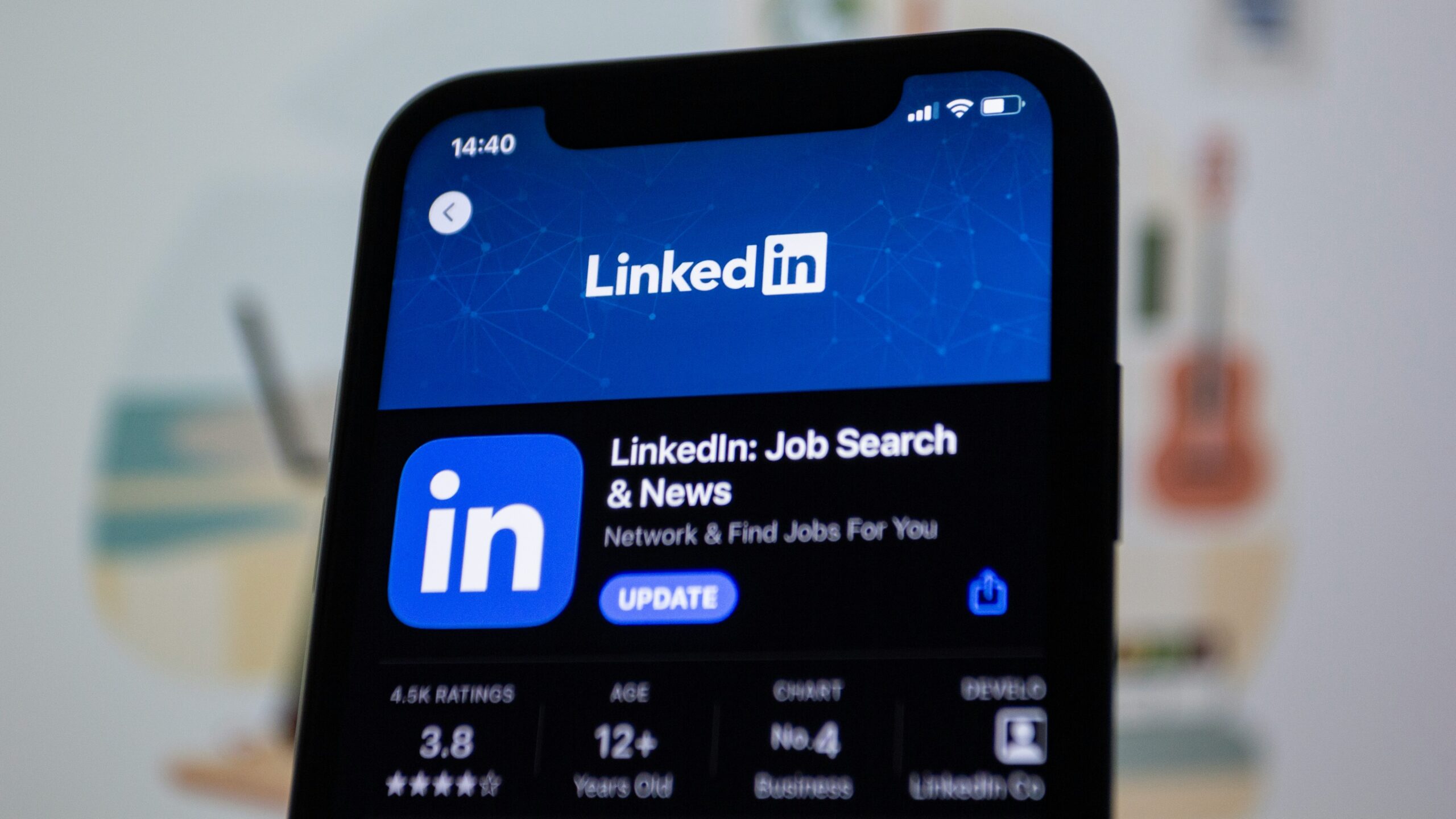In today’s digital age, having a strong LinkedIn profile is essential for professionals across all industries. Whether you’re job hunting, networking, or aiming to establish yourself as a thought leader, your LinkedIn profile serves as your online business card. With millions of users vying for attention, how can you ensure that your profile stands out?
In this comprehensive guide, we’ll delve into effective strategies to optimize your LinkedIn profile, ensuring you make a stellar first impression and leverage the platform for maximum career impact.

LinkedIn isn’t just another social media platform; it’s a powerful tool for career advancement. By optimizing your profile, you increase your chances of being discovered by recruiters, potential clients, or collaborators. A well-optimized profile reflects professionalism and credibility, making it a critical component of your personal brand.
Why LinkedIn Matters in Professional Networking
LinkedIn is the premier platform for professional networking. Unlike other social media networks, LinkedIn is designed specifically to connect professionals, making it the ideal space for forging business relationships. With millions of users, the potential to connect with key players in your industry is vast. By optimizing your profile, you ensure that these potential connections see you at your best.
The Role of LinkedIn in Job Searching
For job seekers, LinkedIn is a treasure trove of opportunities. Many companies use LinkedIn as their primary platform for posting job openings. An optimized profile can help you get noticed by recruiters and hiring managers who are looking for candidates with your skills and experience. By showcasing your accomplishments and professional journey, you make it easy for employers to see your potential.
LinkedIn as a Tool for Personal Branding

Your LinkedIn profile is not just a resume; it’s a personal branding tool. It allows you to tell your professional story in a way that highlights your strengths and achievements. A well-crafted profile can help you establish authority in your field, making you a go-to expert. By regularly updating your profile and engaging with content, you reinforce your brand and keep it relevant.
1. Crafting a Compelling Headline
Your headline is one of the first things people see when they visit your profile. Instead of just listing your job title, use this space to highlight your unique value proposition. Consider what makes you different and what you bring to the table.
Tips for an Engaging Headline
- Include relevant keywords: This helps in search visibility. Keywords are the terms that potential connections and employers use to find professionals like you. By incorporating these into your headline, you increase your chances of appearing in search results.
- Be concise but descriptive: Aim for a clear statement of what you do. A great headline provides a snapshot of your professional identity. It should convey your expertise and the essence of your role in a few impactful words.
- Focus on your audience: What would they be interested in knowing about you? Think about the type of people you want to attract to your profile. Tailor your headline to speak directly to their interests and needs, making them more likely to engage with you.
For example, instead of “Marketing Manager,” try “Strategic Marketing Manager | Content Creator | Brand Storyteller.” This headline not only conveys your current role but also highlights your skills and unique contributions to your field.
2. The Power of a Professional Profile Picture
Your profile picture is your first opportunity to make a personal connection. It should be professional yet approachable. A high-quality headshot with a plain background is generally recommended. Avoid distracting elements and ensure that you dress appropriately for your industry.
Choosing the Right Profile Picture
The right profile picture sets the tone for how you are perceived. It’s your chance to make a strong first impression, so take it seriously. A professional headshot conveys that you are serious about your career. Choose a plain background to keep the focus on you, and wear attire that reflects your professional role.
The Impact of a Smile
A smile in your profile picture can make you appear more approachable and friendly. It invites connection and suggests that you are open to new opportunities. While maintaining professionalism, a genuine smile can make a significant difference in how viewers perceive you.
Avoiding Common Picture Mistakes
Common mistakes include using selfies, group photos, or casual pictures. These can detract from the professional image you’re trying to project. Ensure that your picture is recent and reflects your current appearance. This authenticity builds trust with those viewing your profile.

3. Writing a Captivating Summary
The summary section is your chance to tell your story. Here, you can dive deeper into your professional journey, accomplishments, and aspirations. Think of it as a personal pitch.
Summary Writing Tips
- Start strong: The first few lines are crucial as they are visible without clicking “see more.” Grab attention with a compelling opening that encapsulates your key achievements or professional philosophy.
- Show personality: Let your unique voice shine through. While maintaining professionalism, inject your personality to make your summary memorable. This personal touch can differentiate you from others with similar experiences.
- Highlight achievements: Use specific examples and metrics to showcase your success. Concrete evidence of your skills and accomplishments adds credibility and makes your profile more persuasive.
- End with a call-to-action: Encourage readers to connect or reach out. Whether you’re open to networking, job opportunities, or collaborations, make it clear by inviting viewers to get in touch.
4. Detailing Your Experience
When listing your work experience, go beyond the job description. Focus on achievements and contributions rather than just duties. Use bullet points for clarity and include relevant keywords that align with your career goals.
Key Points for Experience Section
- Use action verbs: Words like “achieved,” “led,” and “developed” convey impact. These verbs suggest initiative and results, painting a picture of a proactive professional.
- Quantify achievements: Numbers and statistics add credibility. Whether it’s the percentage of growth you led or the size of the team you managed, quantifiable results make your accomplishments more concrete and impressive.
- Tailor content: Align your experience with your desired career path. Highlight experiences that are most relevant to your current career goals, ensuring that your profile supports your professional aspirations.

5. Showcasing Skills and Endorsements
Skills are an essential part of your LinkedIn profile. They help in search rankings and give visitors a snapshot of your expertise. Be strategic in listing skills, focusing on those most relevant to your current career goals.
How to Maximize Skills
- Prioritize top skills: Ensure the top three skills are your strongest. These are the skills that will be most visible to others, so make sure they align with your career focus and goals.
- Seek endorsements: Reach out to colleagues or connections to endorse your skills. Endorsements from others add credibility to your profile and validate your expertise in specific areas.
- Update regularly: As your career evolves, so should your skills list. Regular updates ensure that your profile remains current and reflective of your growing expertise and changing career interests.
6. Building Connections
Networking is at the heart of LinkedIn. Building a strong network opens doors to opportunities and collaborations. Be proactive in connecting with professionals in your industry, alumni, and thought leaders.
Networking Tips
- Personalize connection requests: Mention how you know the person or why you want to connect. A personalized message increases the likelihood of your request being accepted and sets the stage for a meaningful interaction.
- Engage with content: Comment on and share relevant posts. Active engagement with content helps you stay visible in your network and positions you as an informed and active member of your professional community.
- Be genuine: Focus on building relationships rather than just adding connections. Authenticity in your interactions fosters trust and can lead to more fruitful professional relationships.
7. Engaging with LinkedIn Content
Being active on LinkedIn can boost your visibility. Regularly engage with content by liking, commenting, and sharing posts. This activity not only keeps your profile active but also positions you as an engaged member of your professional community.
Content Interaction Strategies
- Follow industry leaders: Stay informed and share insights. By following and engaging with thought leaders, you can stay abreast of industry trends and developments, making you a more knowledgeable professional.
- Join groups: Participate in discussions to expand your reach. Engaging in group discussions can expose you to new ideas and connect you with like-minded professionals, broadening your network.
- Post original content: Share your thoughts or expertise to build authority. Original content demonstrates your expertise and positions you as a leader in your field, attracting attention from peers and potential employers. If you struggle with consistency or content ideas, Linkify crafts professional posts that sound like you and ensures you stay visible to the right audience.
8. Recommendations: A Testament to Your Value
Recommendations from colleagues, clients, or supervisors add credibility to your profile. They serve as testimonials of your skills and work ethic.
How to Gather Recommendations
- Reach out to current or former colleagues: Ask for specific feedback related to projects or skills. Specific and detailed recommendations are more compelling and provide concrete examples of your capabilities.
- Offer to reciprocate: Write recommendations for others in return. A mutual exchange of recommendations can strengthen professional relationships and enhance your profile.
- Keep requests polite and professional: Clearly state why you’re seeking a recommendation. A respectful and clear request increases the likelihood of receiving thoughtful and detailed feedback.
9. Regular Profile Updates
LinkedIn is a dynamic platform, and your profile should reflect your current professional status. Regularly update your profile with new skills, experiences, and achievements.
Update Tips
- Schedule periodic reviews: Set reminders to review your profile every few months. Regular reviews ensure that your profile remains up-to-date and relevant, reflecting any new achievements or roles.
- Stay current with industry trends: Reflect any new expertise or shifts in your field. As your industry evolves, so should your profile, showcasing your adaptability and commitment to professional growth.
- Be mindful of privacy: Adjust settings to control what updates your network sees. Managing your privacy settings allows you to control your professional narrative and how your updates are communicated to your network.
Conclusion: Your LinkedIn Success Story
By implementing these strategies, you can transform your LinkedIn profile into a powerful tool for career advancement. Remember, optimizing your profile is an ongoing process. Stay proactive, keep your profile updated, and continue engaging with your network.
With a well-optimized LinkedIn profile, you’re not just showcasing your career history—you’re telling your unique professional story and opening doors to new opportunities. Whether you’re looking to advance in your current role, pivot to a new career, or build your personal brand, LinkedIn is your platform for success. Embrace its potential, and let your professional journey unfold.
